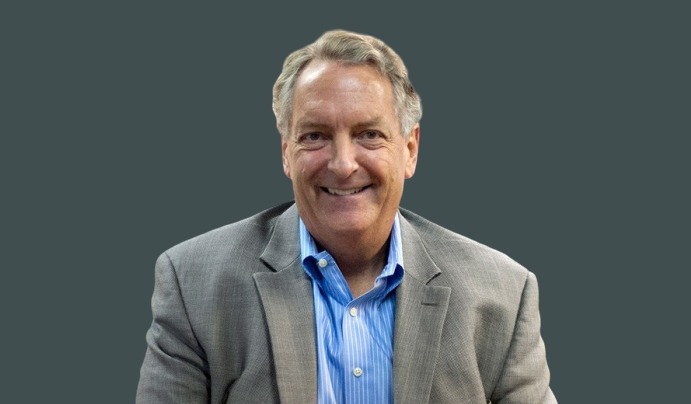
Father of Modern HR, Dave Ulrich on Talent Strategies in Hybrid Workplace
Dave is a university professor, author, speaker, management coach, and management consultant. He is the Rensis Likert professor of business at the Ross School of Business, University of Michigan, and co-founder of The RBL Group.
Dave has published over 200 articles and book chapters and over 30 books on organization, talent, leadership, and HR. He edited Human Resource. Management 1990-1999, served on editorial board of 4 Journals, on the Board of Directors for Herman Miller, and Board of Trustees at Southern Virginia University, and is a Fellow in the National Academy of Human Resources. He is sharing with us his perspectives on how HR adds value to the business…
Dave Ulrich has been ranked the #1 Management Educator & Guru by Business Week selected by Fast Company as one of the 10 most innovative and creative leaders is one of 21 people in the Thinker’s Fifty Hall of Fame, and named the most influential thinker in HR of the decade by HR magazine.
Q- The world of work is changing, how do you see the future of work?
I find that when people say they “know the new normal”, I am skeptical. One of the lessons of the last 18 months is that environmental changes (e.g., global pandemic, racial injustice, political toxicity, economic changes, and digital 4.0) are not always predictable. So, what are some “principles in progress” to deal with this unknowable future? Let me suggest three:
- Harness Uncertainty- Rather than ignore, be threatened by, tolerate, or even manage uncertainty, business and HR leaders need to “harness” it by managing expectations, exploring the future, not the past, experimenting frequently, learning quickly, and being open to agility and change.
- Navigating Paradox– Paradox exists when there are competing approaches that create tension: long vs. short term; outside in vs. inside out thinking; top-down vs. bottom-up decision making; focus on control and stability vs. change and innovation; etc. To navigate (not “manage”) paradox requires recognizing the two extreme options, then exploring when one option works best, how to find common ground between options, and how to debate to find new insights. For example, have tension without contention; disagreement without being disagreeable.
- Personalization- Personalization has two elements. First, a focus on the “person–” with emphasis on emotion, empathy, energy, and experience. Caring for the employee’s personal needs shifts leaders from command and control to care and communication. Second, “–alization” focuses on flexibility, or customization. Where and how people work may vary dramatically on the unique circumstances of each individual.
Q- What to consider when moving to Hybrid Work Model?
Hybrid work is not new, nor is it for everyone (see personalization discussion). Many knowledge-based employees have worked remotely for decades (I have written books and prepared presentations sitting in my office, a hotel room, an airplane, a coffee shop, and occasionally on the beach!).
Some work requires physical presence and some do not. But, increasingly, those involved with knowledge work can do so from anyplace, anytime, anywhere. What this means is that for many, the “boundary” of work is changing. Work has often been seen as a place: get up, go to work, work, return home.
Today, knowledge work can be done anywhere, anytime. But, there is a boundary that defines someone being “at work.” I believe the work boundary is whether an employee creates value for a customer in the short or long term.
A leader can ask employee, how did what you do today create value for a customer today or tomorrow? If an employee can not answer, then “work” was not done. It is not about where or how one works, but whether the work creates value for customers.
Q- How do you see a shift in Talent Landscape in Hybrid World of Work
In French, there is a great saying, “plus ca change, plus c’est la meme chose.” In other words, even as things change, some things remain the same. The principles of managing talent are much the same: ensure that employees are competent (able to do the work), committed (willing to do the work), and contributing (feel a positive experience from doing the work).
Some of the employee practices to deliver on these three talent principles are changing. Being competent is not just about people, but people and technology interface and ensuring competence for accomplishing work may include more talent mobility, positive accountability, attention to diversity and inclusion, career management, and retention of top talent.
Ensuring the commitment may include emerging employee value propositions so that those employees who create more value receive more personalization (or flexibility) in their working conditions.
Delivering a positive contribution or employee experience may require an increased focus on believe (meaning, purpose of work), become (learning and growth from work), and belong (relationships and community).
Q- How to optimize Talent in hybrid working teams?
We have distilled, from many exceptional studies of high-performing teams, four characteristics of a high-performing team, each with talent implications and each able to adapt to hybrid working.
- Purpose: a high-performing team has a clear purpose (called it mission, vision, goals, aspiration, strategy). Every team member, regardless of where they work) should recognize and share the team (or organization) purpose. A simple question a leader can ask is “in 15 words or less what are we (team or organization unit) trying to accomplish?” Regardless of where one works, the answers should be similar. The next question is “why and for whom does this matter?” Again the goal of a team is to create value for a stakeholder.
- Governance: A high performing team has clear governance processes: who is on the team, what roles to people play, how are decisions made, how often does the team meet? Each individual, again regardless of where they physically work, should recognize and accept a team’s governance process.
- Relationship: A high-performing team has to dimensions to positive relationships. First, people need to care for each other. Care is communicated through spending time together, being aware of personal circumstances and needs, showing empathy, serving others, celebrating success, expressing gratitude frequently, and learning to work together. Second, people need to be able to manage conflict by being able to disagree, to express divergent views, to debate and dialogue, to forgive at times, and to savor differences. Teams with individuals who both care and manage conflict have better relationships.
- Learn: A high-performing team continually improves. The team looks at both its outcomes (what is accomplished) and process (how the team operates) to get better. This may be done through regular after-action reviews, team checkups, external audits, or casual conversations. Just as individual leader learning is a key to leadership success; team learning delivers success.
Q- Any concluding comments?
The 2020/21 crises have made human capability (talent, leadership, organization, and HR) center stage. Now is the time for business and HR leaders to pay attention to and upgrade their human capability agenda to deliver long-term stakeholder value.
Thank you, Dave!








